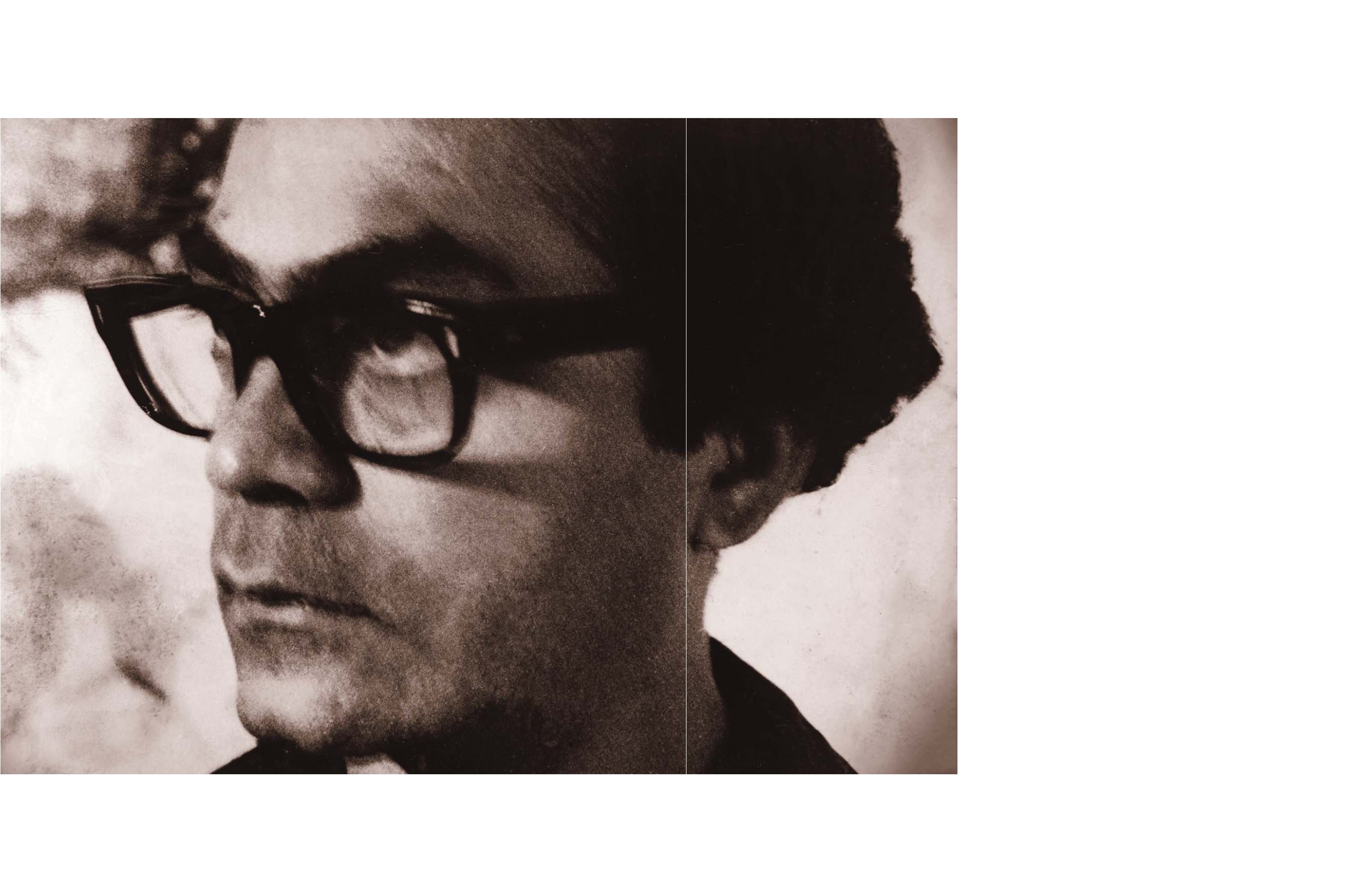

124
Saffronart | Evening Sale
Vasudeo Gaitonde
Image Courtesy of Kishori Das
Published in
Vasudeo Santu Gaitonde: Sonata of Solitude
, Mumbai: Bodhana Arts and Research Foundation, 2016
125
Vasudeo Santu Gaitonde, for the most part, lived a solitary,
spiritually inclined life – the essence of which reflected
palpably in his paintings. Born to Goan parents, he grew up
in a
chawl
in the Girgaum area of Bombay. From his modest
beginnings, and against all odds, he pursued an enigmatic quest
toward abstraction, and is today regarded as one of the most
formidable artists not only in India, but on the world art stage.
In an interview, fellow artist Krishen Khanna stated, “There is a
strong correlation I see between the way Gaitonde thought,
the way he lived, and the way he painted.” (Sandhini Poddar,
V
S Gaitonde: Painting as Process, Painting as Life
,
New York: The
Solomon R Guggenheim Museum, 2014, p. 28) Gaitonde’s
ethereal canvases, including the present lot, exude the grand
silences he alluded to when describing the act of painting.
Gaitonde’s training began at the J J School of Arts in Bombay
in 1945. “Gaitonde’s formal initiation into the fine arts
came at a momentous time, for India stood on the brink
of independence, poised to throw off the yoke of British
colonialism. The curriculum at the arts college largely followed
the same pattern as the Royal Academy in London.” (Meera
Menezes,
Vasudeo Santu Gaitonde: Sonata of Solitude,
Mumbai:
Bodhana Arts and Research Foundation, 2016, p. 48) Gaitonde,
however, influenced by mentors like Shankar Palshikar and
Jagannath Ahiwasi, also studied Indian miniatures. In his early
works, he would adopt the bold colours and fine lines of
the Basohli and Jain schools of painting. Gaitonde eventually
gravitated towards Western Modernism, particularly works by
Paul Klee. The latter’s whimsical forms and colours opened up
a new language of expression for Gaitonde.
In the early 1950s, Gaitonde was loosely associated with the
influential Bombay Progressive Artists’ Group, invited by M F
Husain, and later the Bombay Group. Even in these collectives,
Gaitonde charted his own course, “consciously choosing not to
pay banal homage to the social and political causes of the time.
The social relevance of art was of no particular interest to him,
Gaitonde’s kingdom was not of this world. Abstraction, with
its emphasis on the autonomy of the aesthetic, liberated him
from depicting matters temporal, and he was highly conscious
of its emancipatory potential. He chose to focus instead of
light and line, texture and tactility, opacity and translucence
and on the evocative possibilities of colour.” (Menezes, p. 27)


















